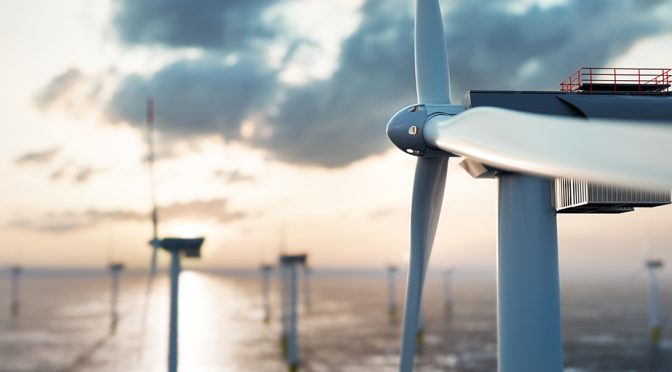DNV has been appointed by Elenergy Co Ltd, a Korean renewable energy development company, as owner’s engineer for its 1.5 GW fixed-bottom Chujin offshore wind project.
When completed in 2027, the Chujin plant will be the largest commercial-scale offshore wind farm in the country. As the owner’s engineer, DNV will drive the pre- Front End Engineering Design (FEED) and supervise contractors in the final design, procurement, construction, commissioning and operations phases to mitigate risks and prepare optimal solutions for the building stages of the project.
The wind farm will be located 10 km east of Chuja-do in Jeju City in southern Jeonam province, South Korea and will consist of approximately 100 wind turbines. This project is backed by strategic investor Namsung Shipping, a South Korea-based shipping carrier. The Chujin wind farm will be constructed in three stages, consisting of 500MW for Phase I and an additional 1 GW for Phases II & III.
This offshore wind project has been designed to support the “Green New Deal,” South Korea’s national development strategy to advance low carbon technology initiatives and transition to a green economy.
With South Korea’s high offshore wind speeds and low renewable energy penetration at 4 per cent (coal plants contribute over 40 per cent of the country’s power generation) offshore wind presents significant opportunities to contribute to the country’s energy mix.
“Most offshore markets in Asia Pacific are only just starting to develop. Navigating and managing technical risks and local market regulations are crucial. This is why we selected DNV as our technical advisor for this project – DNV is not only a global leader in offshore wind power engineering but also has an in-depth understanding of the reasons behind failures and non-conformities of the electrical infrastructure inside an offshore wind farm. We aim to perform projects smoothly and that does require a partner with insight and knowledge on preventing failures and managing risks. With the wide experience of DNV’s experts on electrical infrastructure and especially on submarine power cables, we will be in an optimal position with their help, to keep the project on track with respect to scope, schedule and cost.” said Elenergy Executive Director, Seung Han.
“This project is an exciting opportunity to combine the latest developments in offshore wind technology to produce clean energy, power the electricity grid from coastal locations and pave the way for this model to be used more widely around the world. It also is an impetus to grow the pool of specialized vessels to support offshore windfarm work,” added Young Seok Choi, Managing Director, Namsung Shipping.
Fixed offshore wind is maturing at a significant pace and has become an essential component of decarbonization. By offering access to stronger and more consistent wind, offshore wind has now become firmly cost-competitive with fossil fuel alternatives. This offers abundant business opportunities for South Korean EPC contractors, component and technology providers and project developers.
“Wind technologies have played a crucial role in developing South Korea’s renewable energy ecosystem. The construction of the Chujin offshore wind farm off the coast of Chuja-do will fuel Korea‘s green economy and will enable power companies to provide clean energy at a scale not seen before. We look forward to supporting both local and international developers in deploying their offshore wind farms and building a world-class renewable energy system for Korean communities and enterprises,” said Lim Dong Ho, Market Area Manager – Korea, Energy Systems at DNV.

Brice Le Gallo, Vice President and Regional Director APAC, Energy Systems at DNV said, “With the demand for reliable clean energy rising in South Korea and elsewhere around the world, the success of offshore wind farms is important for the industry. Wind farms have traditionally been built on land. But offshore wind technology has the potential to harness wind power at greater wind speeds, providing commercial-scale clean energy to help countries deliver on their net-zero targets.”
With higher and more-reliable wind speeds and less constraints on hub heights and site locations, DNV’s Energy Transition Outlook forecasts offshore wind will show a 13% average annual growth from 2020 to mid-century.


